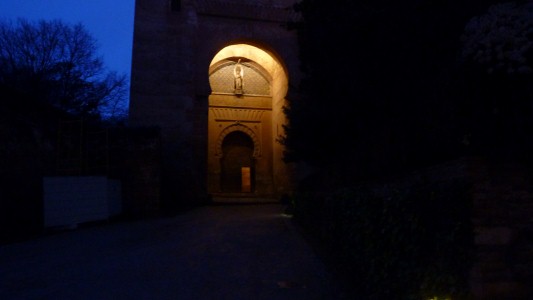
They can be booked either online, phone, or using a La Caixa (local bank) ticket machine.
The first machine was broken. The second one worked but didn't give us the promised option to select time of entry to the Nasrid Palaces.
This is the Puerta de la Justicia at 07:20. A tad early.
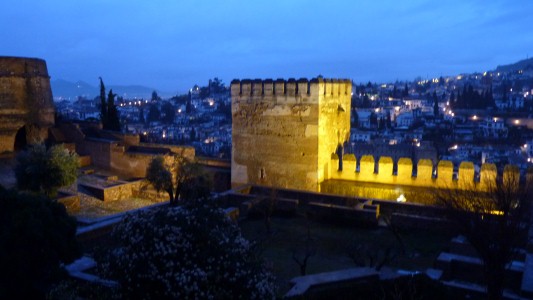
The main gate opens at 08:30. Same time as our palaces ticket.
We weren't convinced but based our visit on at least an hour.
It took us about 10 minutes from the main gate to the side gate (Puerta de la Justica), walking the path outside the walls.
The car park contained one other motorhome when we arrived. And same when we left. We probably could have camped there (only EU18 for 24 hours).
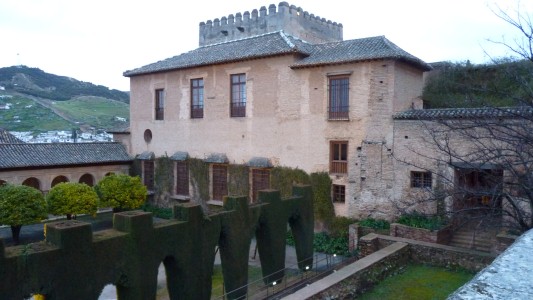
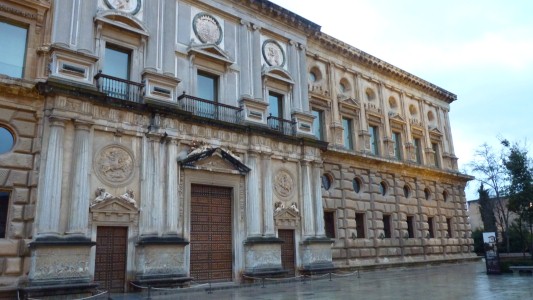
This is the adjacent, and later, Christian Palace de Carlos V. Spanish renaissance architecture.
Construction of Alhambra began in 1238 with the establishment of the Nasrid Dynasty. The Moors in this part of Spain.
The Alhambra was surrendered to the Catholic monarchs in 1492.
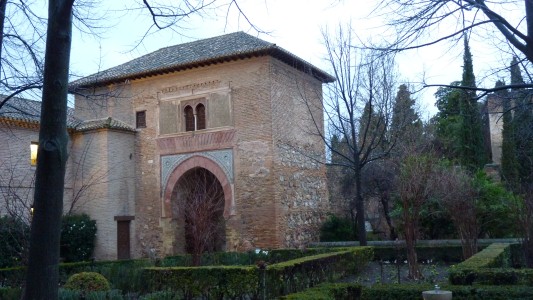
Seems it used to be an entrance to the medina.
There is much about the buildings, but very little information on the way of life.

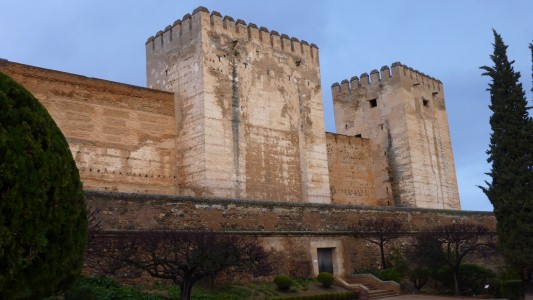
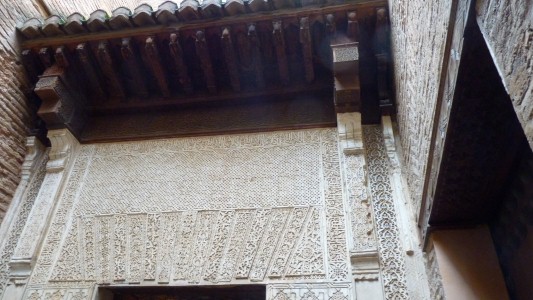
Our first impression was of architecture similar to what we had seen in the palace near Rissani (Morocco).
But on a far grander and more intricate scale.
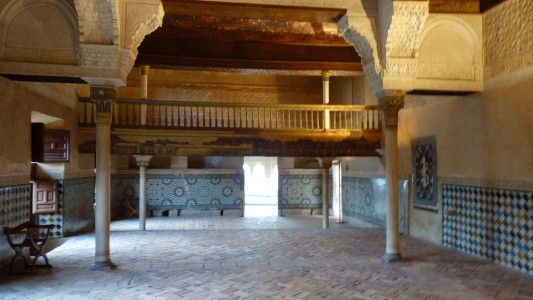
Its not a mezzanine floor, just a separator.
The first part of the Mexuar Palace (1362-1391).
We had the luxury of being first through the door.
At this time of the morning there were more staff than visitors.
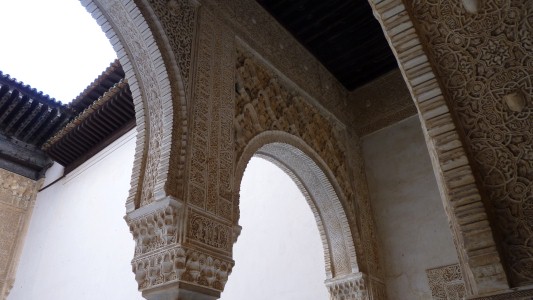
We think we are in a courtyard between the Mexuar and the earlier Comares (1333-1354) palaces.
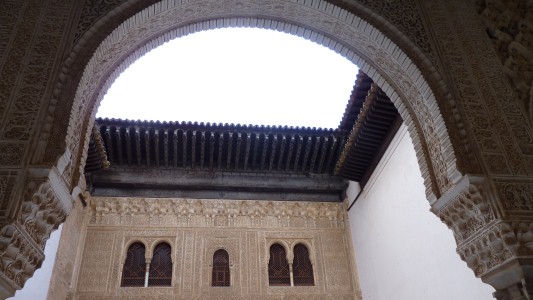
We chose the roof first.
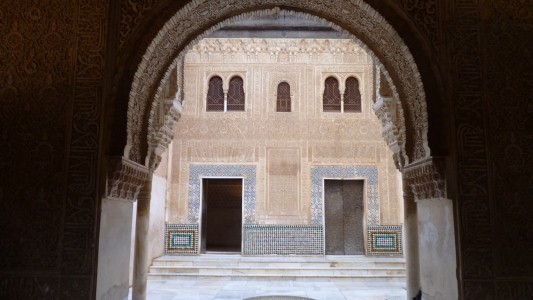
The signs said the left one.
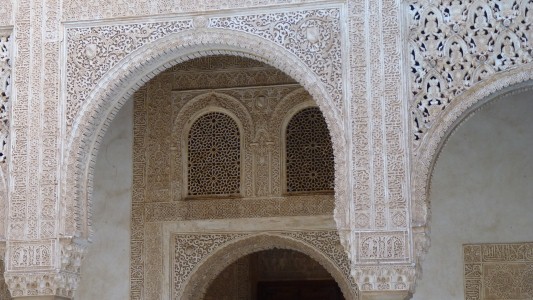
The Comares Palace transcended it.
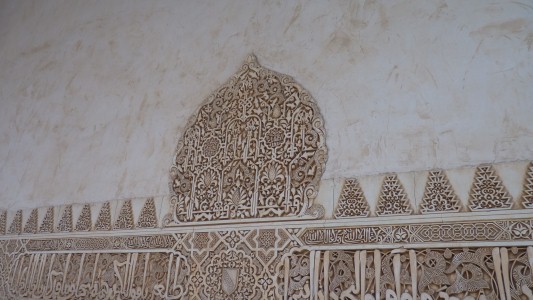
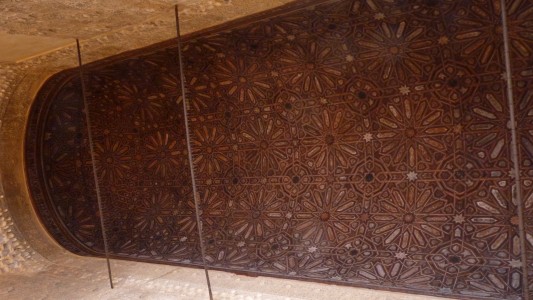
All different.
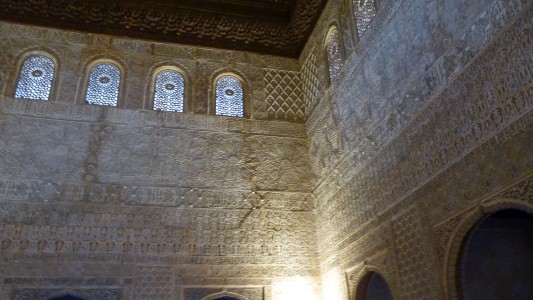
This is the Chamber of the Ambassadors in the Tower of Comares.
The nine rooms off it are for the Sultan.
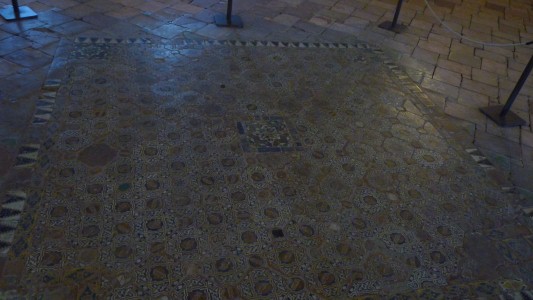
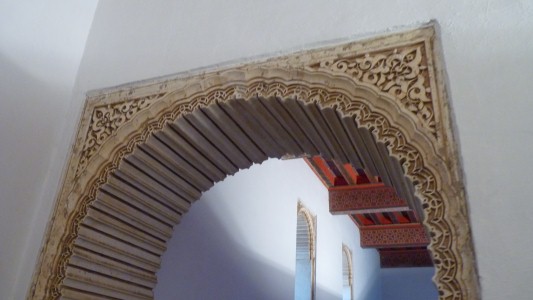
And none of them gothic.

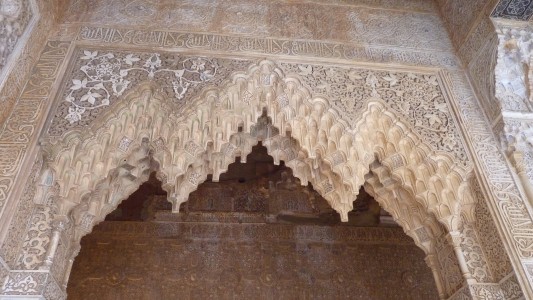
This is a "stalactite arch".
The Palace of Lions (1362-1391)
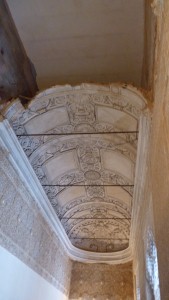
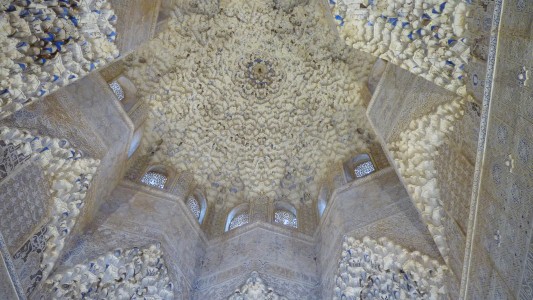
The Hall of the Abencerrages.
"Just" another residential area.
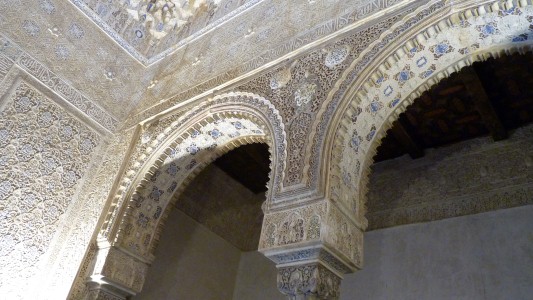
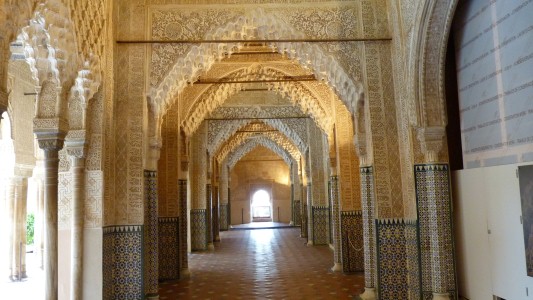
The Hall of The Kings.
A bit of conservation of paintings on the right.
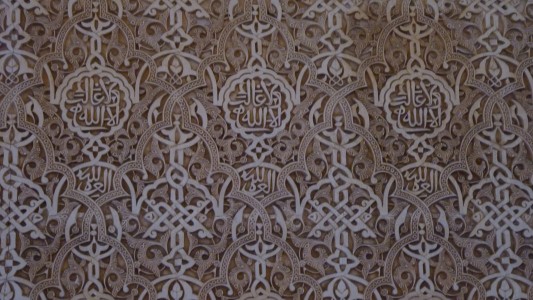
But we can see the repetition.
Of course you've guessed that there's a slight difference in one of the repetitions......
Is it an original mistake or part of restoration?
For those who understand my sense of humour there really is an inconsistency in this pattern.
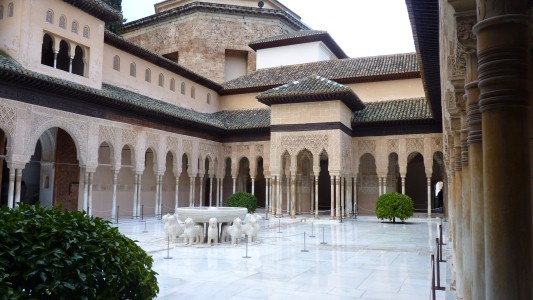
Carved marble lions.
Water and fountains seem to be a feature of the Alhambra.
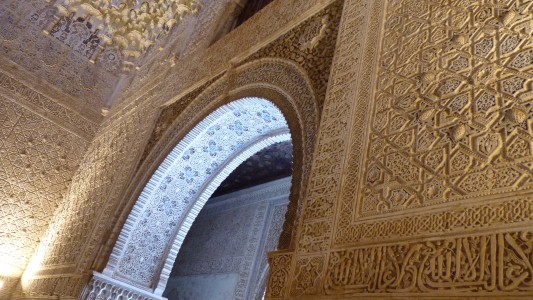
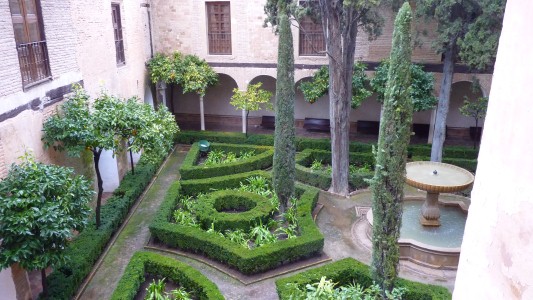
We couldn't find it on the map.
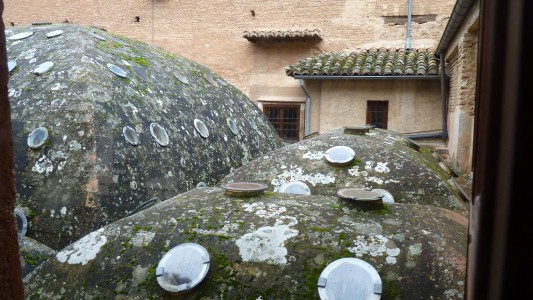
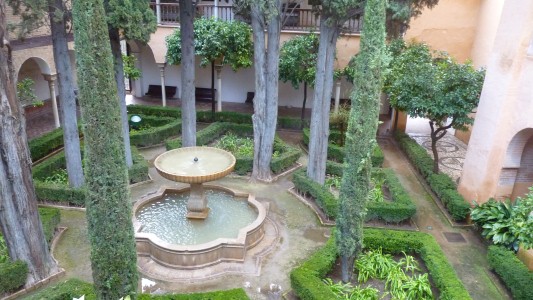
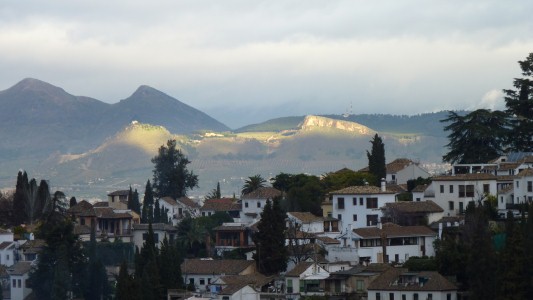
The sun broke through briefly in the distance.
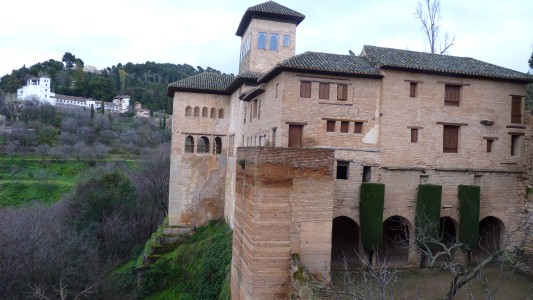
It seems the Alhambra has had flexible boundaries over time. The important buildings form part of the outer wall.
The Partal Palace has only been part of "Alhambra" for the last century and was at one time privately owned.
One of the ceilings is in a German museum.
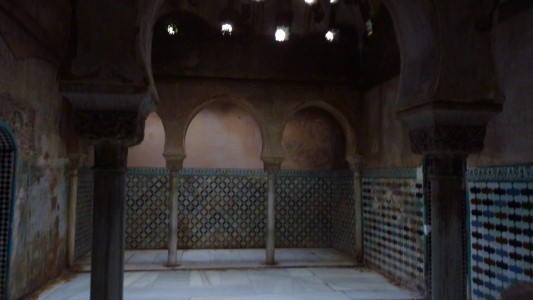
The roof of what we think were store rooms.
No windows in the walls.
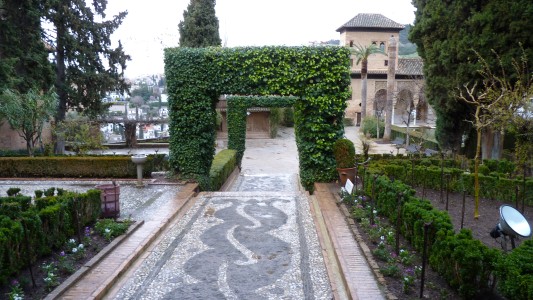
Having occupied our spot in the timetable for the Nasrid Palaces we were free to wander.
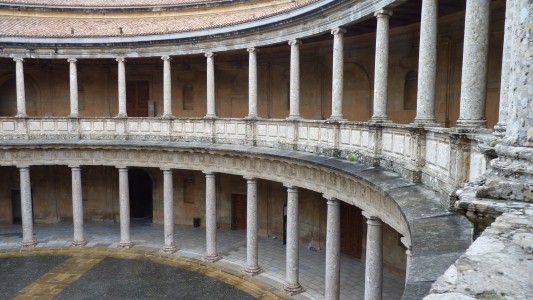
It was Charles V that married Isabella of Portugal.
We finally realised why it was drawn as it is on the map. Th circular space in the middle.
The stone of the pillars is a conglomerate.
Something else we've not seen before.
The museum on the ground floor is well worth a visit. But no photographs.
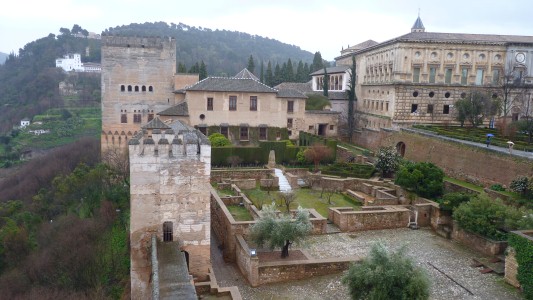
The earliest part of the Alhambra. For the troops.
This is looking back to Nasrid Palaces and Palace of Charles V.
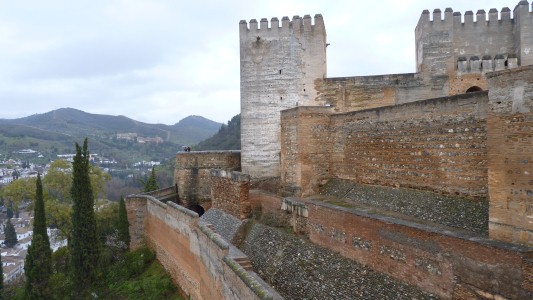
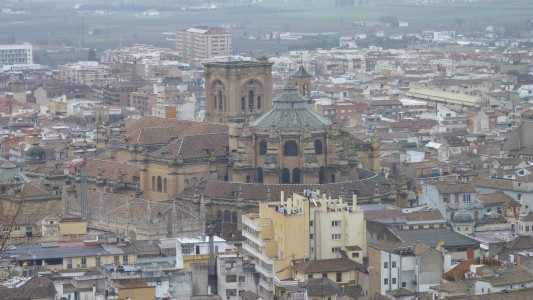
We would have liked a walk round the old town but decided against it.
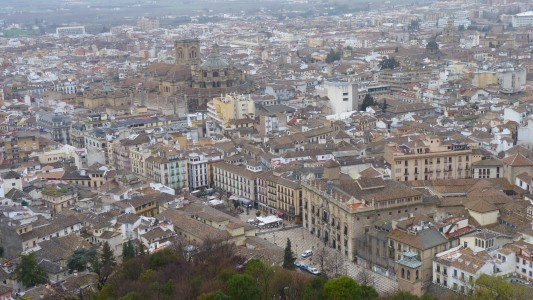
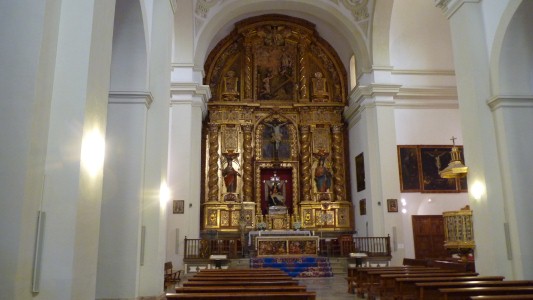
To the left and right, in front, of the altar are where worshipers would have lit their candles in days gone by.
These days a coin lights an led light.
We thought something has been lost but can't quite explain why.
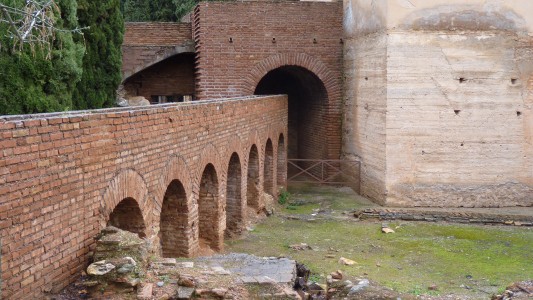
This looked like an aquaduct to us but just out of the picture is a gap for people to walk through.
In common with all the other places we have visited on our trip there is no map of the plumbing despite being mantioned often.
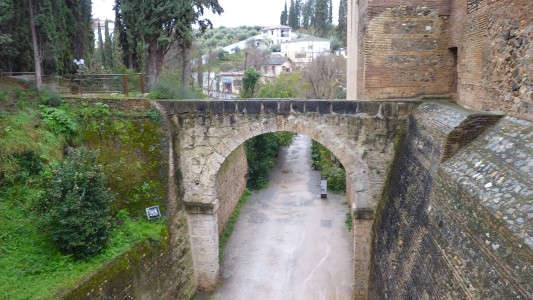
The problem for us with aquaducts is that without water in them its difficult to know which way they run.
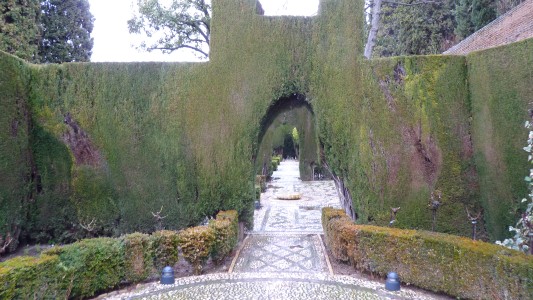
A strange word to our ears.
The consensus seems to be it refers to "the Architects Garden".
Built between 12th and 14th centuries. A place for relaxation as well as veggie production.
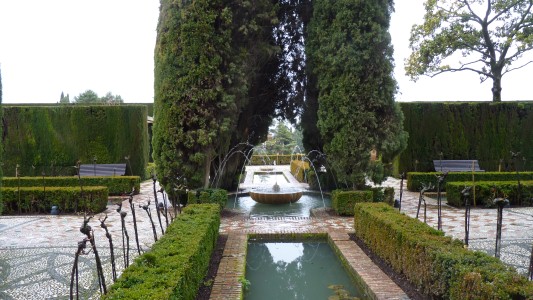
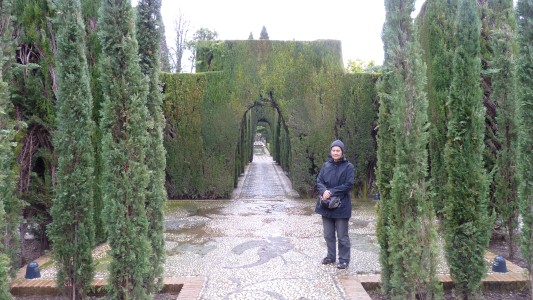
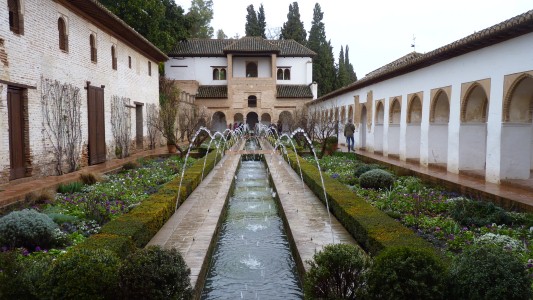
We'd been confused by mention of the "Royal Canal" in the Nasrid Palaces.
We suspect it hasn't translated well.
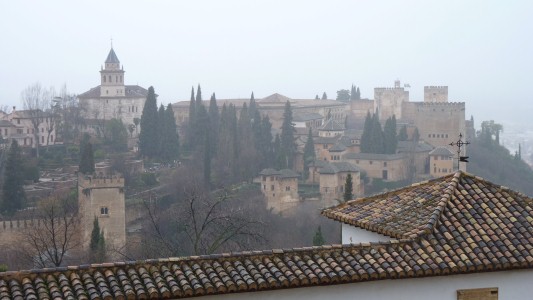
What can we say? A palace, a fortress, a citadel, a garden, and a living town at some time. Very different. Very worthwhile getting up at some unearthly hour of the morning, standing round for an hour or so, and getting a bit damp.
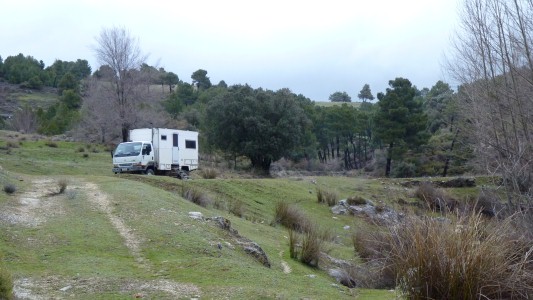
We camped and collected about 80 litres of water in a couple of hours off our roof.
We also fixed the diesel tank changeover valve. A wire had broken and shorted to the chassis which provided a bit of puzzlement for a while.